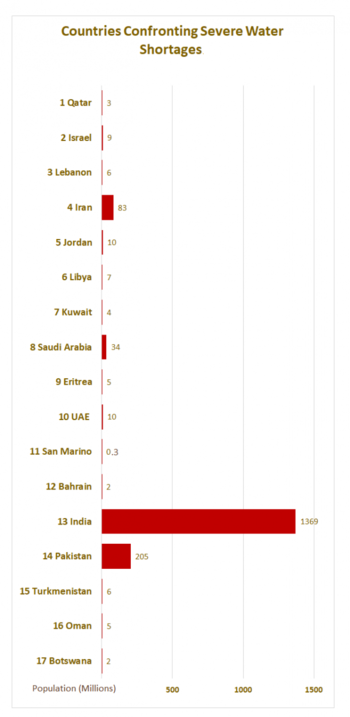Looming Water Crises: New York Times
About 25 percent of the world’s human population confronts severe water shortages. The Water Resources Institute reports that 17 nations are under extremely high water stress. Reasons for shortages vary including waste, pollution and excessive reliance on groundwater. “Climate change heightens the risk,” report Somini Sengupta and Weiyi Cai for the New York Times. “As rainfall becomes more erratic, the water supply becomes less reliable. At the same time, as the days grow hotter, more water evaporates from reservoirs just as demand for water increases.” Controlling water supply is a challenge, and shortages do not mean that cities do not escape floods. Government water officials can reduce waste, organize collection of rainwater, restore wetlands, regulate pollution and adjust pricing to reflect water’s value. – YaleGlobal
Looming Water Crises: New York Times
As 25 percent of the world’s human population faces severe water shortages, government officials must protect supplies, reducing waste and restricting pollution
Tuesday, August 6, 2019
Read the article from the New York Times about a model from the World Resources Institute that assesses water security.
Somini Sengupta, international climate reporter for the New York Times, tells the stories of communities and landscapes most vulnerable to the effects of climate change.

Water rankings: The World Resources Institute ranks nations on water supplies; 25 nations do not offer data (Source: World Resources Institute)
The World Resources Institute posts an interactive map.

The New York Times
© 2019 The New York Times Company